The undocking of USS Constitution on July 23, 2017, a grand moment in the 2015 – 2017 restoration, eclipsed an important anniversary in the ship’s history. In this post, we re-visit “Old Ironsides'” historic sail on July 21, 1997. It was on that day that the ship sailed for the first time in 116 years, in celebration of the 200th anniversary of her launch in 1797.
The idea to sail Constitution was first discussed in the late 1980s, but it wasn’t until the ship’s structural strength was returned to her through the 1992 – 1996 restoration that the Navy began, in earnest, to plan for an historic sail. CDR Michael C. Beck was “Old Ironsides'” captain and he led an advisory group that investigated the possibilities of taking the ship to sea, under sail, for the first time in more than a century.
As there was no one alive in 1997 who knew how Constitution would respond under sail, Howard Chatterton, Director of the Hydrodynamics Division of the Naval Sea Systems Command, made a 12-foot, 1:25 scale model of “Old Ironsides” to test how the ship would react under different wind and wave conditions. Long before there was 3-D printing, Chatterton’s computer-based model of the ship’s hull was linked to a milling machine which carved the vessel from high-density foam. The model was then finished by hand, covered with a coat of fiberglass cloth, and fitted with fiberglass masts and yards. The model’s sails were made out of nylon. At the time Chatterton noted, “We wouldn’t ordinarily make a model of a ship to test it. On today’s modern steel-hulled ships we have very accurate data, which we can use to calculate performance. Constitution is so unique, though, we weren’t comfortable taking the usual calculations.”
Constitution‘s sail configuration of two jibs on the bow, three topsails on the three masts, and the spanker on the stern was chosen because they represent the real driving sails of the rig. They also provided a large enough sail area to the wind without actually having to set too many sails. And they also replicated “battle sail” – the essential sails used in her engagement with HMS Guerriere on August 19, 1812. Even with only these six sails set, Constitution carried 12,225 square feet of the more than 44,000 square feet of sail that she could set in 1812.
The model was tested in the 380-foot tow tank at the Hydromechanics Laboratory at the United States Naval Academy, chosen as a nod to Constitution‘s history as an Academy training ship during the American Civil War. With reflective targets on her masts and upper hull to track her movement, the miniature “Old Ironsides” was buffeted by winds with speeds between 17 to 42 knots (approximately 20 to 50 mph) and under both bare poles (no sails) and varying sail configurations.
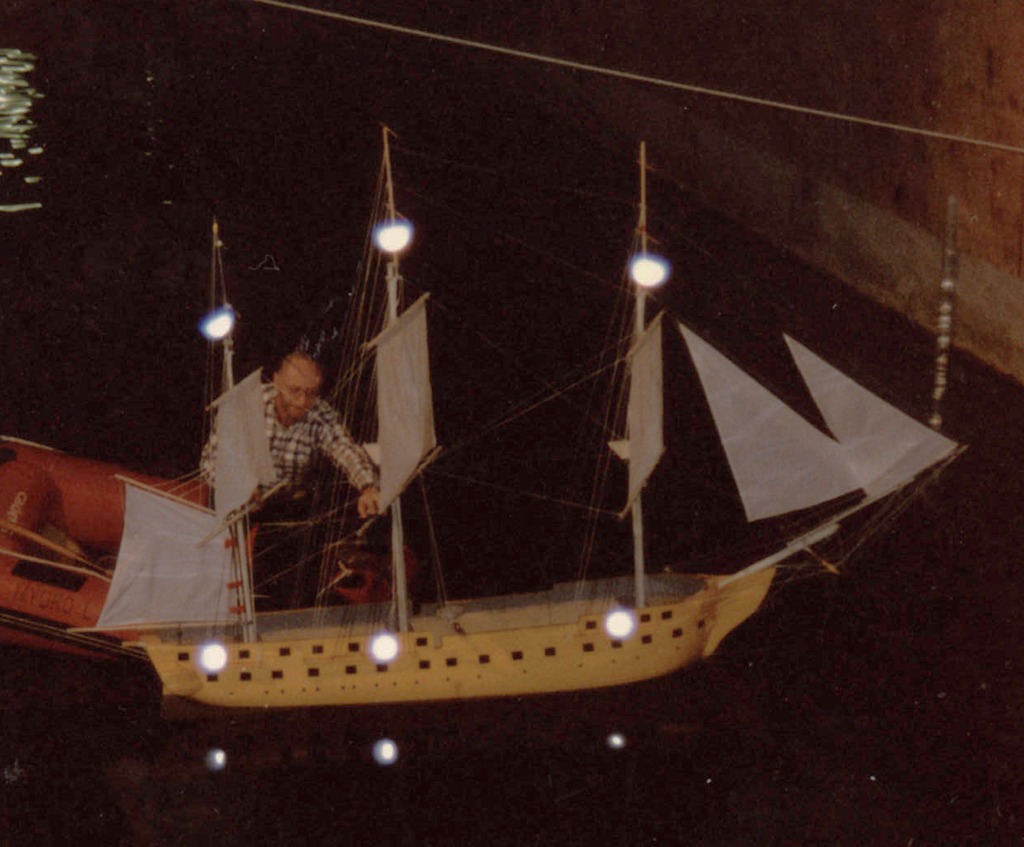
Aside from new masts, sails, and running rigging for the ship, both the crew of Constitution and the Naval Historical Center Detachment Boston staff (today’s Naval History & Heritage Command Detachment Boston) had to become square-rigged sailors. Sail training was conducted on the U.S. Coast Guard’s training vessel, Eagle, the replica HMS Bounty, and Brig Niagara.
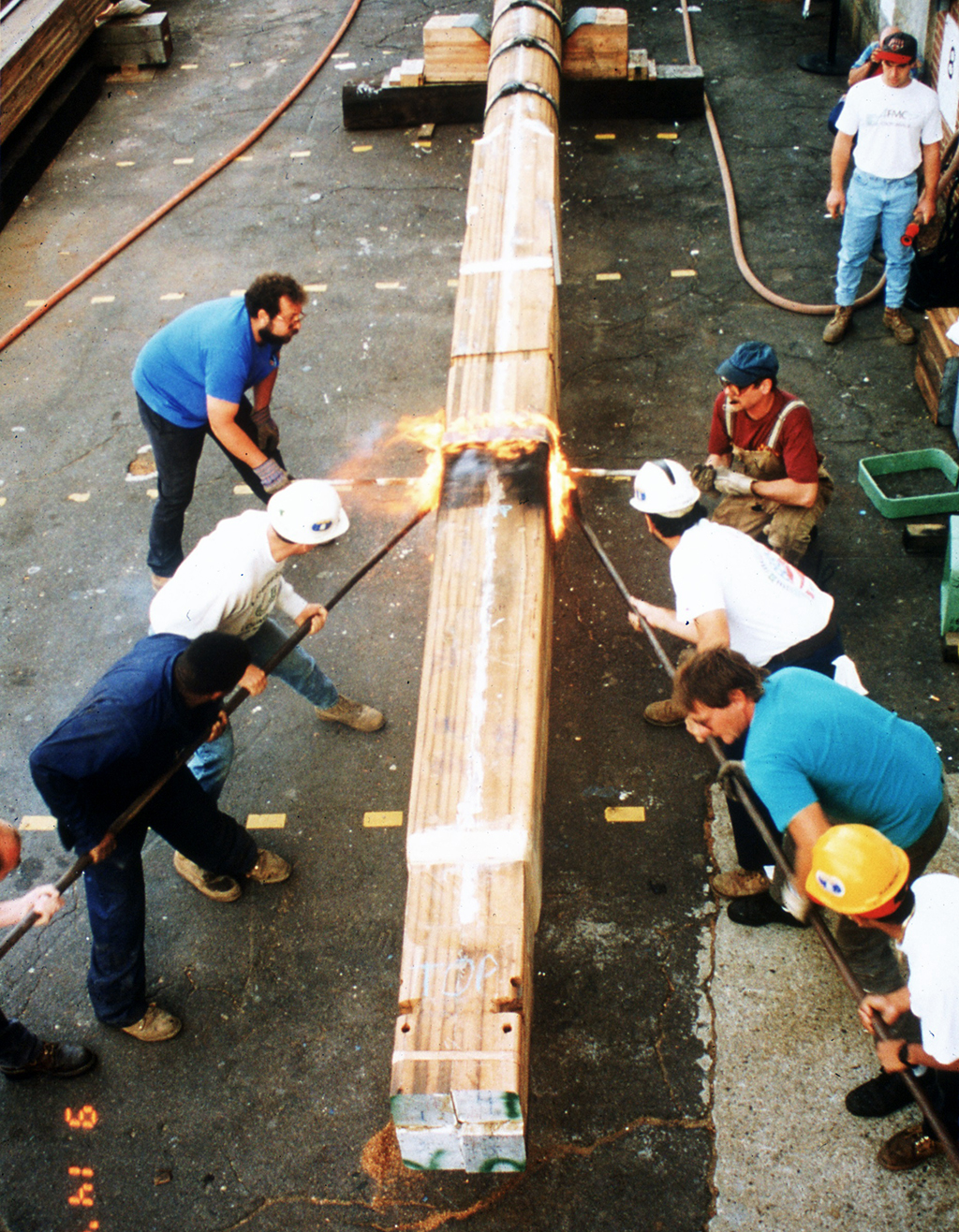
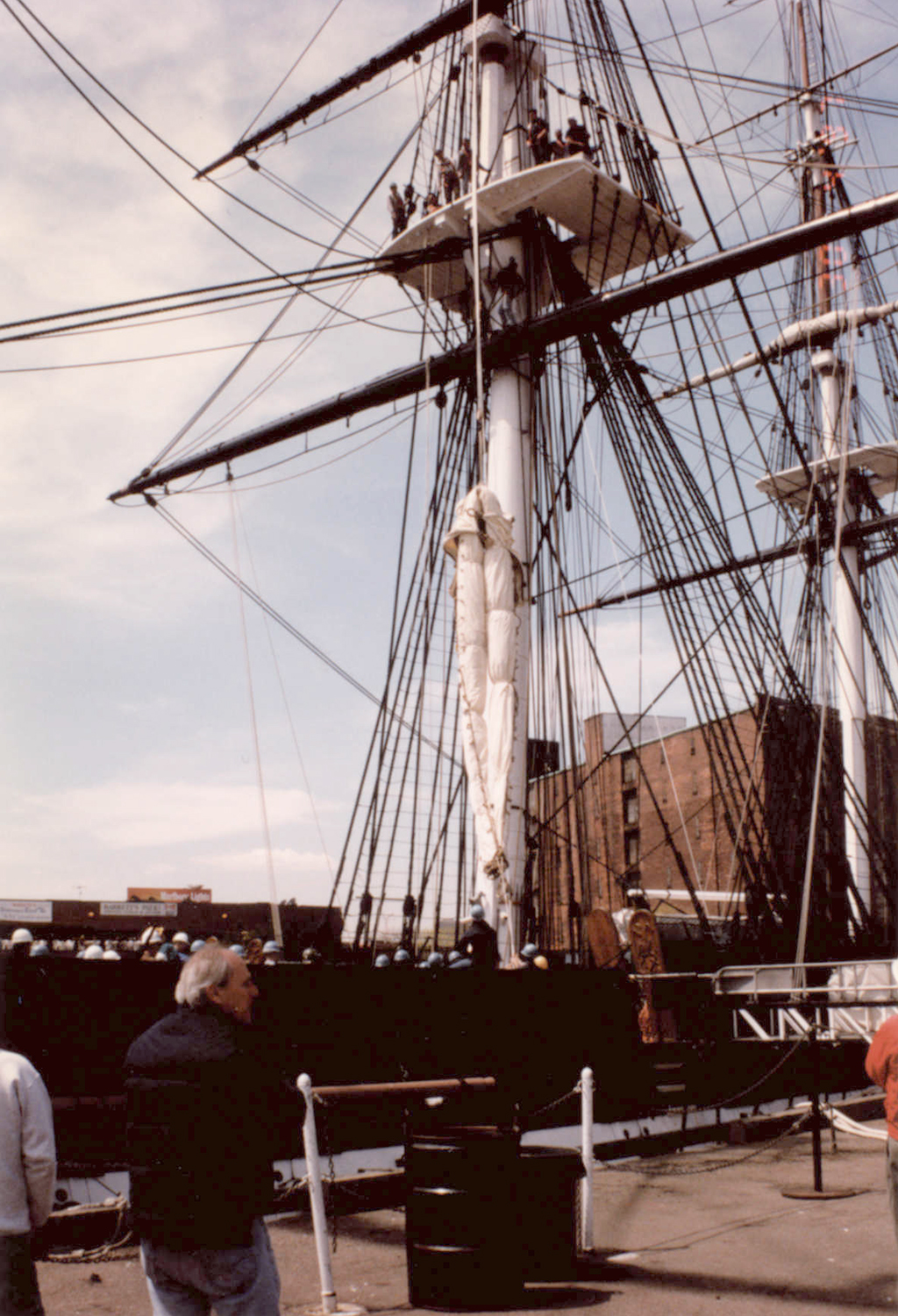
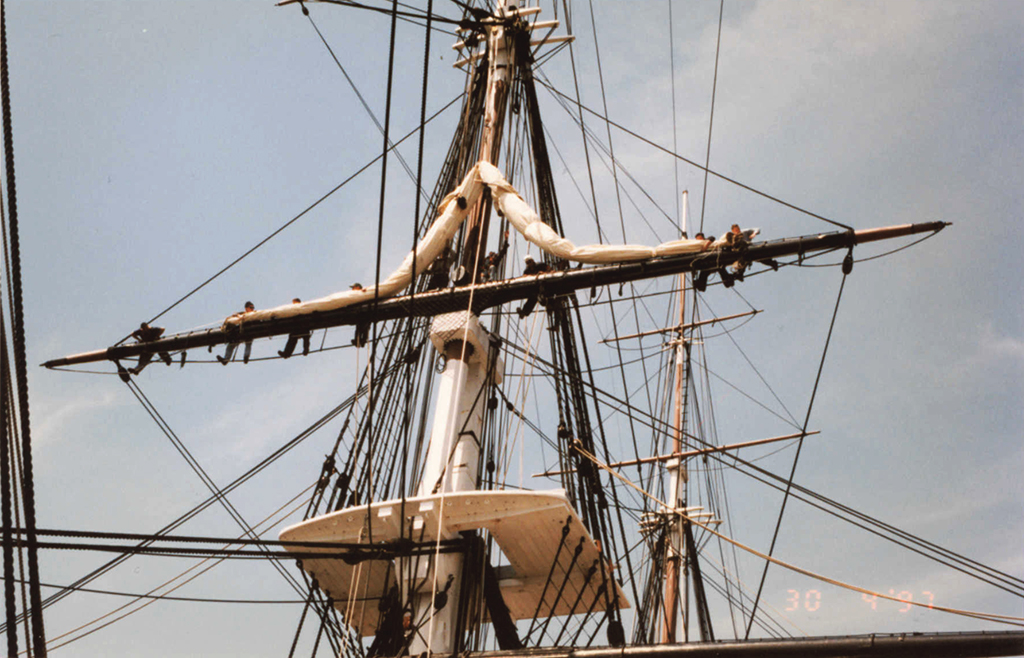
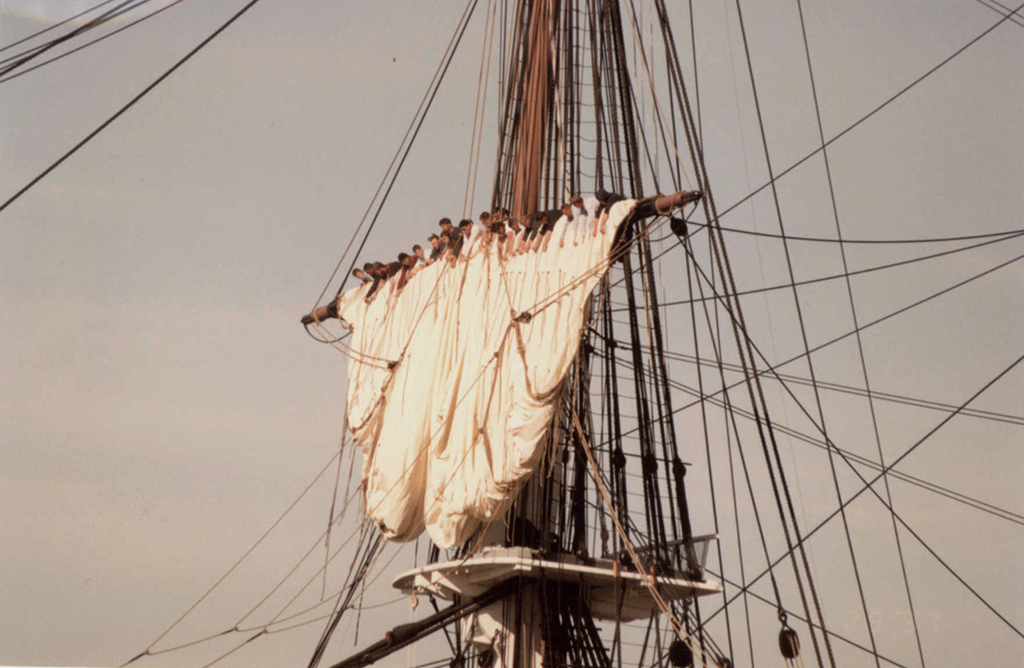
Two of the six sails were made by the NHHC Detachment Boston riggers. A section of the third floor rigging loft in Building 24 in the Charlestown Navy Yard was set aside as the “sail loft” and there the flying jib (see photo below) and the spanker (a fore-and-aft sail set aft of the mizzen mast) were made.
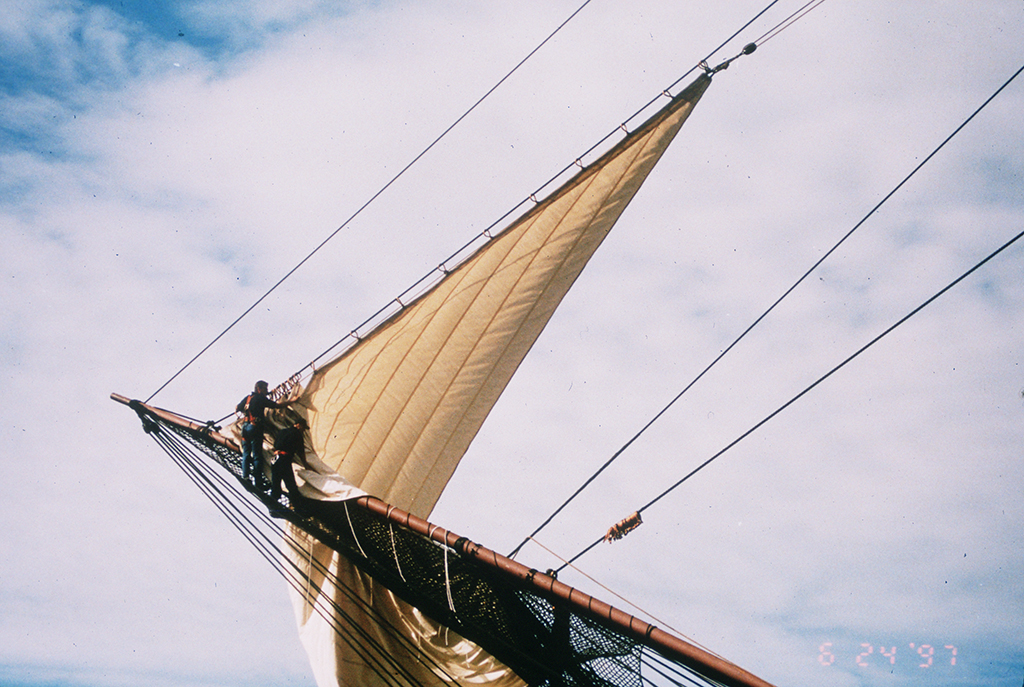
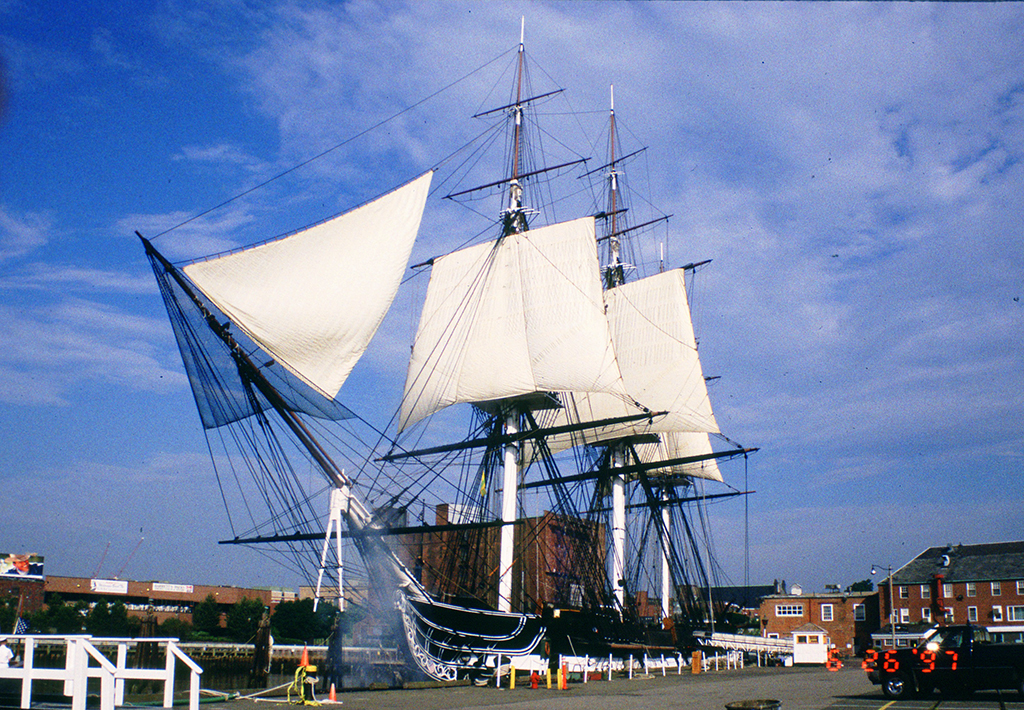
Interest in Constitution‘s historic sail was widespread and the ship and its sailing crew began to appear in magazines and newspapers all across the country.
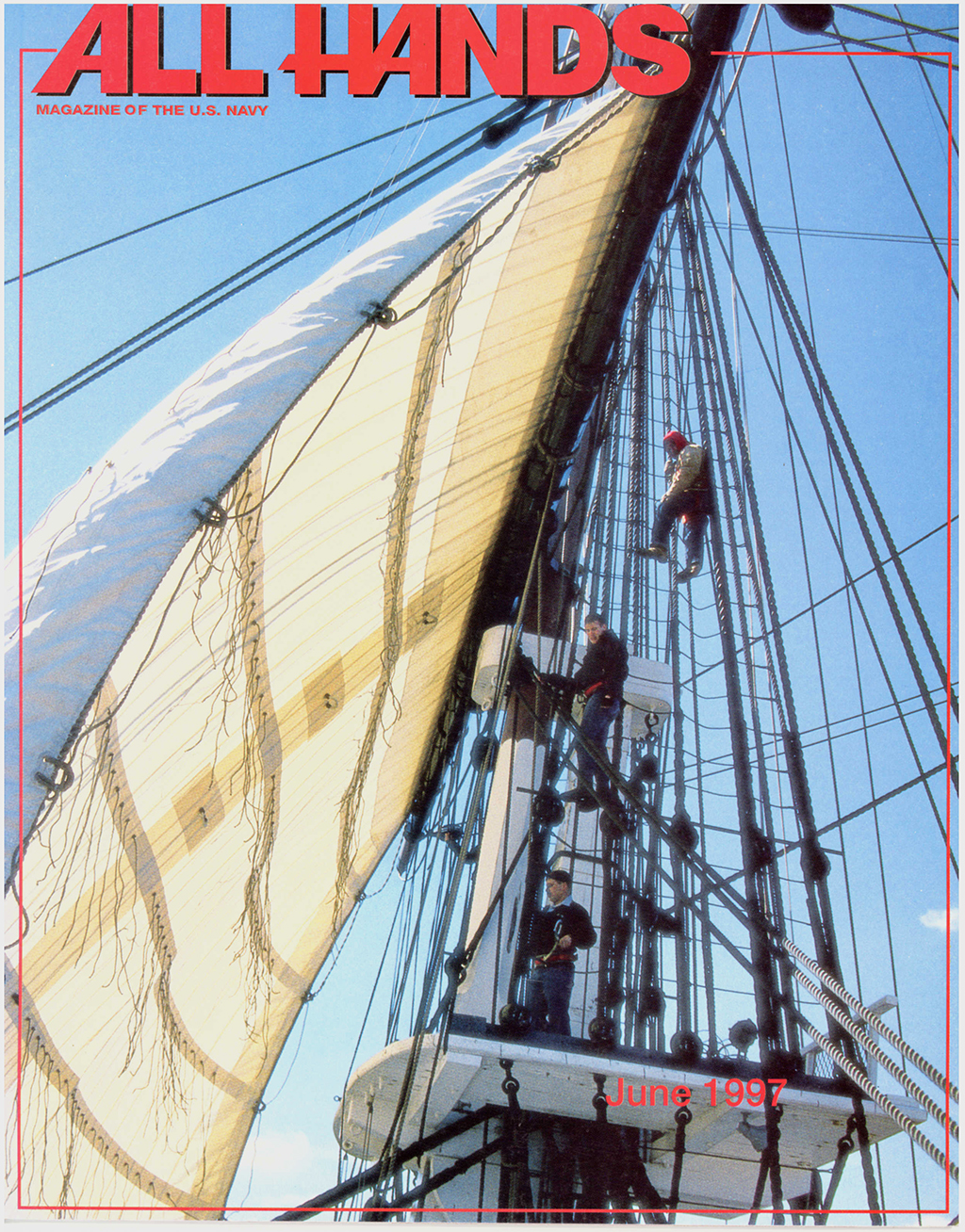
After months of planning and sail training, the much anticipated event finally arrived. USS Constitution left the Charlestown Navy Yard and Boston Harbor on Sunday, July 20, 1997, for her tow to Marblehead, Massachusetts, where she would be berthed overnight, for the “sail of the century” the next day. Her departure from Boston Harbor was significant in and of itself, as the last time she had left the harbor was on July 2, 1931, when she began her three-year, three-coast National Cruise of 1931 – 1934.
The morning of Monday, July 21, 1997, began with an overcast dawn. With no sunshine and little wind, the decision was to go ahead with the sail. USS Constitution was towed out of Marblehead Harbor to her designated sailing zone, approximately three miles into Massachusetts Bay. She was escorted by the modern frigate USS Halyburton and the destroyer USS Ramage. Approaching 12noon, the crew of 150, including the NHHC Detachment Boston staff, “Old Ironsides'” crew, and U.S. Naval Academy midshipmen who had been trained in line handling on the ship’s spar deck, began setting the six sails. When high noon arrived, Constitution‘s tow lines were dropped and she began to sail unassisted for the first time since 1881. At 12.30, Constitution‘s saluting guns roared, providing a 21-gun salute as the U.S. Navy’s “Blue Angels” screamed overhead at 350 miles per hour. In the one-hour downwind sail, “Old Ironsides” made 4.5 knots in a 7 knot breeze, which is a further testament to Humphrey’s sleek underwater hull design and the large sailing rig.
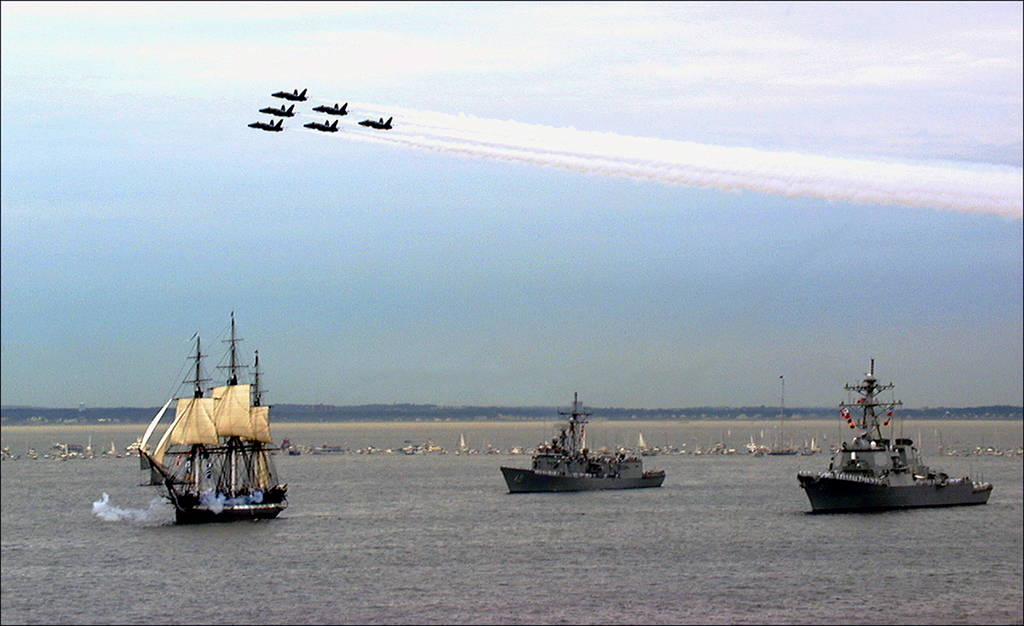
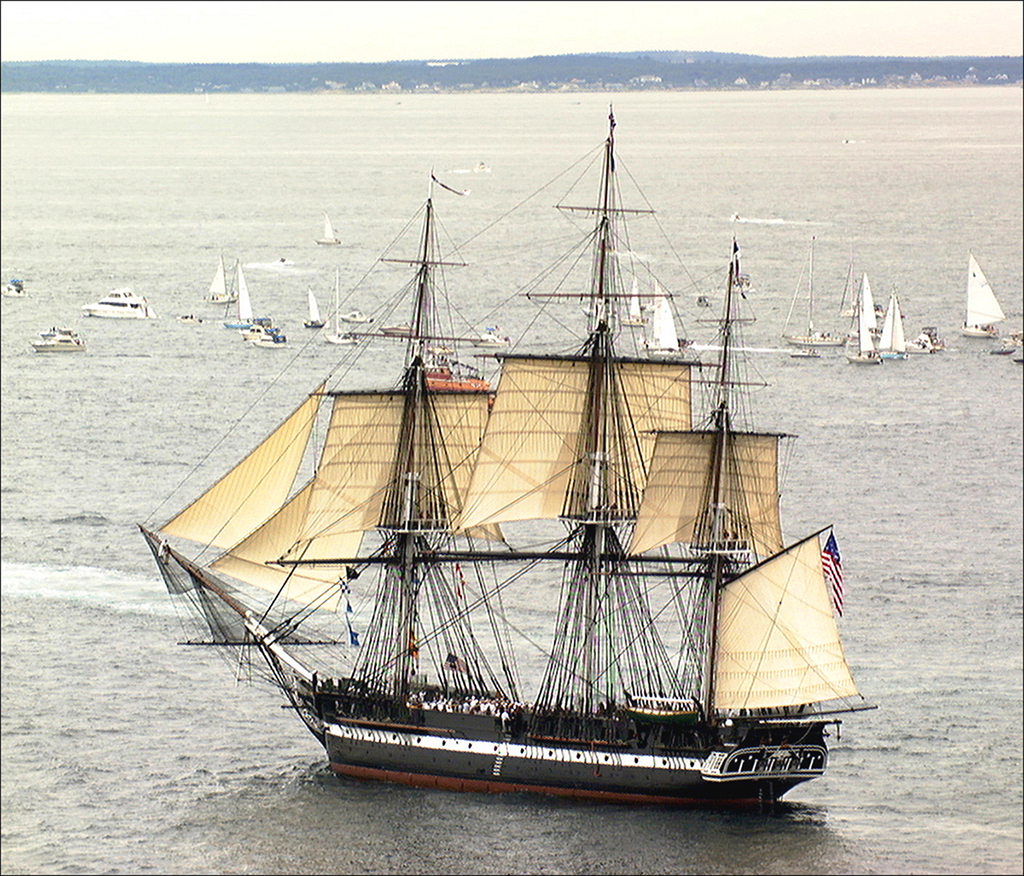
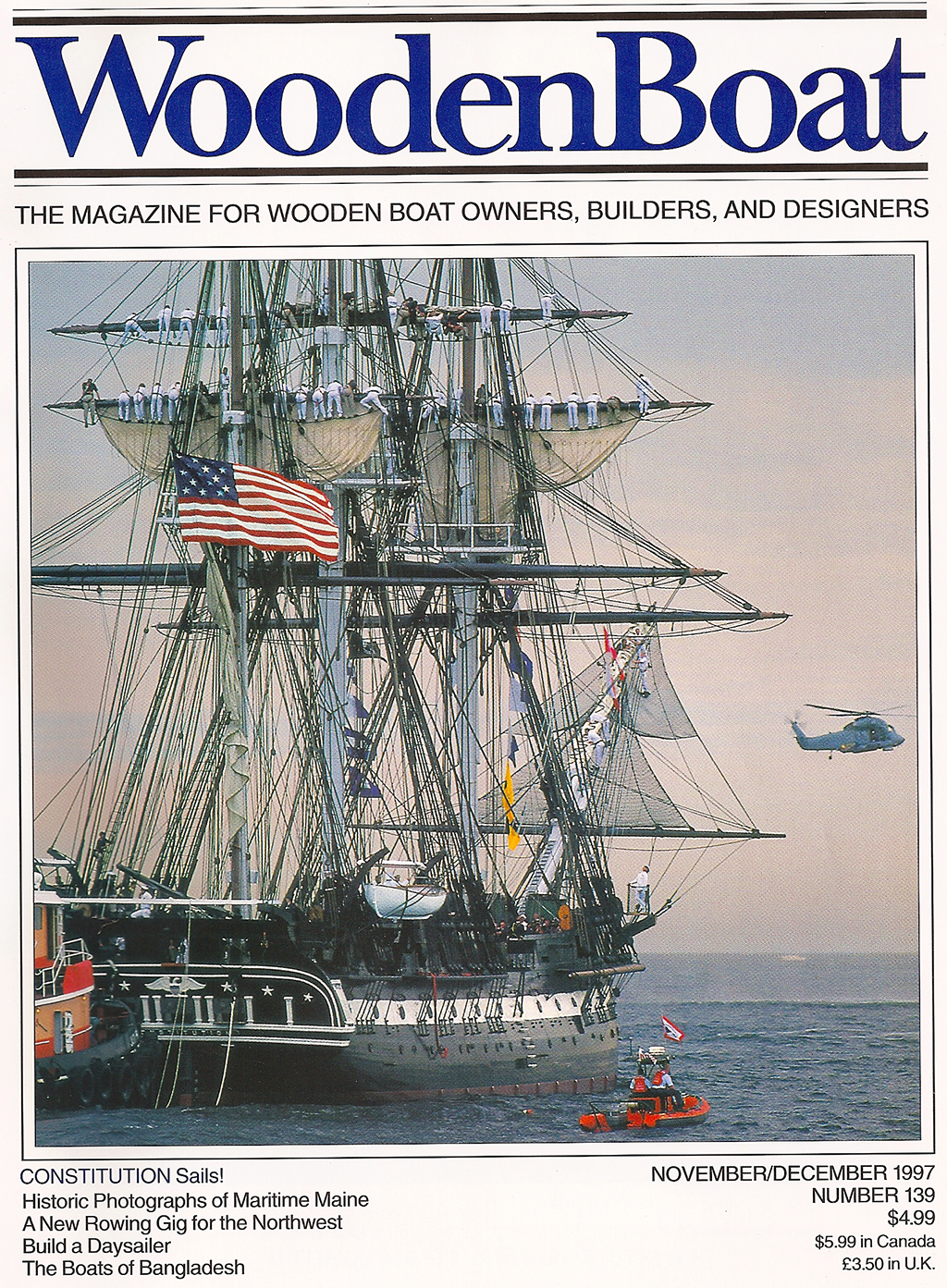
In the weeks leading up the sail, CDR Michael Beck had this to say about USS Constitution, named for the document, the Constitution of the United States of America:
“The ship is a national treasure. By any measure, [USS] Constitution is as strong as she was 200 years ago, as are the American values and ideals the ship represents. Sailing [Constitution] is our way of thanking Americans for maintaining the ship and for holding dear the values and ideals she represents as we enter the next millennium.” [As quoted in “Huzzah! USS Constitution Sails Again”, All Hands, June 1997]
Note: The USS Constitution Museum’s newsletter Constitution Chronicle was consulted for information in this article.
_____
The activity that is the subject of this blog article has been financed in part with Federal funds from the National Maritime Heritage Grant program, administered by the National Park Service, U.S. Department of the Interior, through the Massachusetts Historical Commission, Secretary of the Commonwealth William Francis Galvin, Chairman. However, the contents and opinions do not necessarily reflect the views or policies of the Department of the Interior, or the Massachusetts Historical Commission, nor does the mention of trade names or commercial products constitute endorsement or recommendation by the Department of the Interior, or the Massachusetts Historical Commission.
The Author(s)
Margherita Desy, Historian, Naval History and Heritage Command Detachment Boston
Historian, Naval History and Heritage Command
Margherita M. Desy is the Historian for USS Constitution at Naval History and Heritage Command Detachment Boston.
